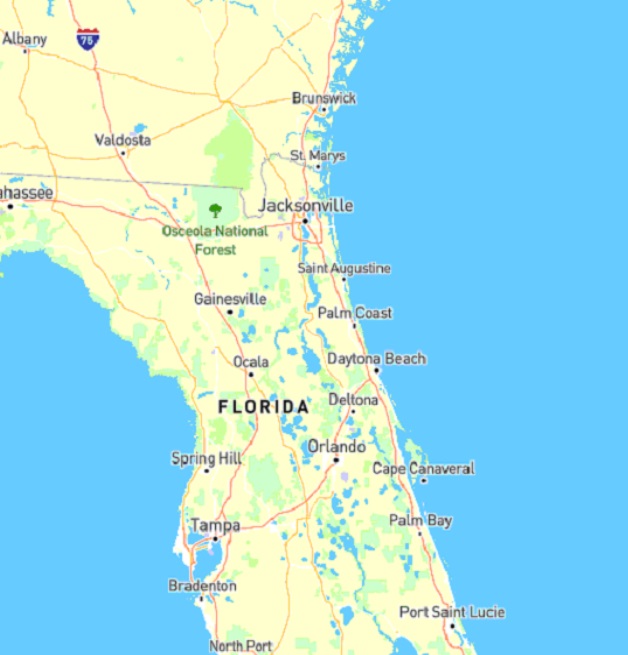Hoover, Alabama vs Auburn, Alabama Population and Size Compared
Hoover and Auburn are two prominent cities in Alabama, each known for its unique culture, community, and educational institutions. Hoover is recognized for its suburban appeal and proximity to Birmingham, while Auburn is famous for its university and vibrant college-town atmosphere. This article provides an in-depth comparison of these two cities, highlighting their populations, geographical sizes, and other relevant features.
Geographic Overview
Hoover, Alabama
- Location: Hoover is located in central Alabama, just south of Birmingham, and is part of the Birmingham metropolitan area. It is situated in Jefferson and Shelby counties.
- Area: Hoover covers an area of approximately 48.2 square miles (124.0 km²), making it one of the larger suburbs in the region.
- Topography: The city features a mix of rolling hills, parks, and residential neighborhoods, providing a suburban environment with easy access to urban amenities.
Auburn, Alabama
- Location: Auburn is located in eastern Alabama, approximately 60 miles southwest of Atlanta and about 30 miles northeast of Montgomery. It is situated in Lee County and is home to Auburn University.
- Area: Auburn spans about 59.2 square miles (153.7 km²), which includes a blend of residential, commercial, and educational spaces.
- Topography: The city is characterized by its hilly terrain, green spaces, and a picturesque downtown area, offering a charming and vibrant atmosphere.
Size Comparison
Auburn’s geographical area of approximately 59.2 square miles makes it larger than Hoover, which covers around 48.2 square miles. This size difference allows Auburn to incorporate more green spaces and facilities, contributing to its appeal as a college town.
Population Statistics
Hoover
- Population: According to the 2020 Census, Hoover had a population of approximately 84,000 residents. It has seen consistent growth in recent years, making it one of Alabama’s largest cities.
- Demographics: Hoover has a diverse population, with a mix of families, young professionals, and retirees. The city is known for its strong sense of community and family-friendly atmosphere.
Auburn
- Population: As of the 2020 Census, Auburn’s population was approximately 66,000 residents. The population can fluctuate significantly during the academic year due to the presence of students at Auburn University.
- Demographics: Auburn has a diverse demographic, heavily influenced by the university. The community consists of students, faculty, and long-term residents, creating a lively and engaging atmosphere.
Population Comparison
Hoover has a larger population of approximately 84,000 residents, compared to Auburn’s 66,000. The difference in population size reflects Hoover’s status as a suburban city with a growing community, while Auburn’s population is influenced by its status as a college town.
Historical Context
Hoover
- Establishment: Hoover was established in the late 1950s and has since transformed from a small community into a thriving city. The city was incorporated in 1967 and has grown rapidly, particularly in the last few decades.
- Economic Development: Hoover has developed a diverse economy, with key sectors including retail, healthcare, and professional services. The city is known for its shopping centers, such as the Riverchase Galleria.
Auburn
- Establishment: Auburn was founded in the early 19th century and was originally known as “Little Texas.” The city was incorporated in 1839 and has a rich history tied to agriculture and education.
- Economic Development: The economy of Auburn is significantly influenced by Auburn University, which is a major employer in the area. The presence of the university fosters a vibrant economy, with sectors such as education, healthcare, and retail playing vital roles.
Educational Opportunities
Hoover
- Schools: Hoover is served by the Hoover City Schools, which operates several elementary, middle, and high schools known for their strong academic programs and extracurricular activities.
- Higher Education: While Hoover does not have a major university, it is located near Birmingham, which offers access to several higher education institutions.
Auburn
- Schools: Auburn’s public education system is served by the Auburn City Schools, which includes high-performing schools that emphasize academic excellence and community involvement.
- Higher Education: Auburn University is the cornerstone of education in the city, offering a wide range of undergraduate and graduate programs, contributing to a highly educated population.
Economic Conditions
Hoover
- Economy: Hoover boasts a robust economy, with significant contributions from retail, healthcare, and professional services. The city’s strategic location near Birmingham enhances its economic opportunities.
- Job Market: The job market in Hoover is diverse, with various employment options available across multiple industries, making it an attractive destination for job seekers.
Auburn
- Economy: Auburn’s economy is primarily driven by Auburn University, which influences various sectors, including education, healthcare, and tourism. The city also has a growing retail sector that serves residents and visitors.
- Job Market: The job market in Auburn is influenced by the university, offering various employment opportunities for both students and long-term residents. The presence of local businesses also contributes to job availability.
Community Life and Culture
Hoover
- Community Events: Hoover hosts numerous community events throughout the year, including festivals, outdoor concerts, and holiday celebrations. These events foster a strong sense of community and encourage resident participation.
- Parks and Recreation: The city features a variety of parks and recreational facilities, providing residents with opportunities for outdoor activities, sports, and leisure.
Auburn
- Community Events: Auburn hosts various community events, including art fairs, farmers’ markets, and cultural celebrations, promoting community engagement and a vibrant local culture.
- Parks and Recreation: Auburn offers a robust park system, with numerous recreational facilities, trails, and green spaces for residents to enjoy outdoor activities and community gatherings.
Transportation
Hoover
- Transportation Network: Hoover has a well-developed transportation infrastructure, with easy access to major highways, including Interstate 65 and U.S. Route 31. The city also has limited public transportation options.
- Commute: Many residents commute to nearby Birmingham for work, and the city’s location makes it convenient for accessing larger metropolitan amenities.
Auburn
- Transportation Network: Auburn is also well-connected to major highways, including U.S. Route 280 and Interstate 85. Public transportation is limited, primarily serving students and residents.
- Commute: The city’s layout makes it relatively easy to navigate, with many amenities within walking distance, especially in areas close to the university.
Conclusion
In summary, Hoover and Auburn are two distinct cities in Alabama, each offering unique characteristics and opportunities. Hoover is known for its suburban lifestyle and proximity to Birmingham, while Auburn is recognized for its vibrant college-town atmosphere, largely due to Auburn University.
Both cities provide a range of amenities, educational opportunities, and community engagement options for residents. Understanding their differences and similarities can help individuals make informed decisions about where to live, work, and raise a family.
Whether one is drawn to Hoover’s suburban appeal or Auburn’s collegiate vibrancy, both cities offer a wealth of opportunities for a fulfilling life in Alabama.





